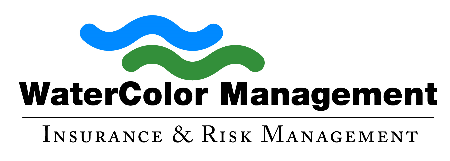
Wastewater employees at wastewater treatment plants work around plenty of unique risks. For plant managers, they have to not only protect their employees from health hazards, but they have to make sure the public doesn’t come in contact with them either.
While this is a daunting task in the wastewater industry, some steps can be taken to limit exposure to risks and keep the public and employees who work among wastewater safe from harm.
Read on to see how wastewater management clients can keep their safety plan updated and effective.
Unique Worksite Risks of a Wastewater Treatment Plant
The vats of wastewater products that are treated should only be interacted with for cleaning purposes. Working around these vats creates the potential for exposure to health risks by falling in. Unfortunately, this is a possibility. The first step to avoid this risk is to use non-slip surfaces around all vats and all catwalks. Additional traction tape helps keep this from happening as well. All employees should also use slip-resistant footwear.
Rescue devices at the ready is a good idea if someone falls into a vat. Rescue hooks and flotation devices similar to those found at public pools should also be placed within easy reach.
All employees at a plant must understand the additional personal hygiene requirements. Inspired by the CDC, wastewater employees can limit hygiene issues through frequent handwashing with antibacterial soap for at least 20 seconds. Any open cuts or skin abrasions should be covered with proper first-aid treatment materials. Providing a location for wastewater employees to change after a shift is highly recommended.
Standard Safety in Wastewater Treatment
Proper maintenance of machinery is a necessity. If wastewater treatment equipment fails, not only does it create unsafe situations and ups the potential for hazards to occur, but a facility is susceptible to running into processing issues. The best maintenance in the industry is done before something wrong happens. This limits the safety hazards that come up when equipment malfunctions or ends up breaking down.
Proper maintenance requires organization and planning. All electrical systems and pipes must be labeled correctly, including identifying intake and outlet pipes and any equipment that presents flash hazards. If workers have to perform repairs near live equipment, the correct tools and protective gear need to be present.
Employees are required to work on catwalks at a wastewater treatment plant high above open vats. All railings should be adequately installed to prevent falls. If workers have to perform their duties in unguarded areas, fall protection is required for any work six feet or higher.
Lastly, employees should also follow any confined-space entry requirement enforced by OSHA. Confined spaces are locations that someone can enter, have restricted exit and entry, and are not designed for ongoing work. Plants need to post warnings in any hazard zones to caution workers and keep them as informed and as safe as possible.
About Watercolor Management
WaterColor Management has insured the water industry for over 30 years. Our policies include unlimited defense cost coverage in the event of a lawsuit against you. Call us at (256) 260-0412 or email info@watercolormanagement.com for a quick quote for your Water Business Professional, Products/Completed operations, Pollution and General Liability Insurance.




